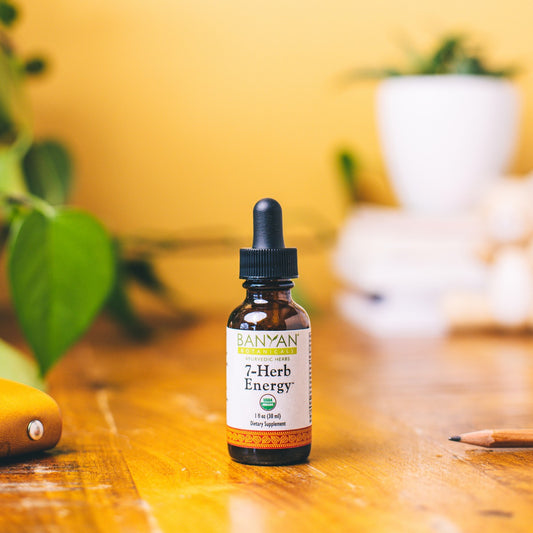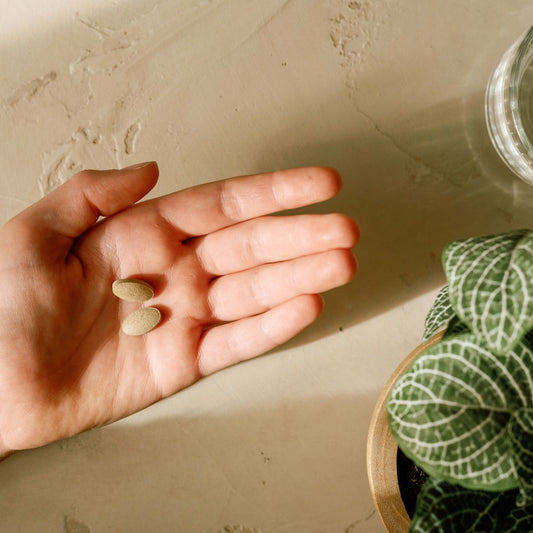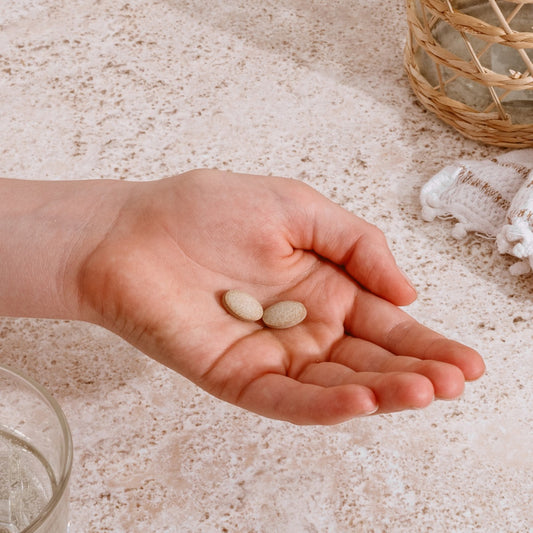Our dreams and aspirations can only come to life if we have the energy to fulfill them, but our inclination to push through things for the sake of achievement is draining our batteries. Ultimately, finding the delicate balance between what fuels you and what depletes you is essential for sustaining energy, yet this is something that can take a lifetime to learn. Investing time and self-study into better understanding those details is important, and there are some basic principles within Ayurveda that can help.
The Physical and Mental Energy of Doshas
Just as the three Ayurvedic constitutions are often interested in different activities, each dosha also has a varying capacity for sustaining and expressing both physical and mental energy.
Vata
The energy the vata constitution possesses comes in short bursts, and as such, vata-type people can deplete quicker than other doshas. They are good at sprints or intervals of energy output and can learn quickly, but on flip side, their stamina can be low and their long-term memory lacking.
Kapha
Kapha-types are on the opposite end of the spectrum. Their energy is slow to build, but they have an endurance that can outlast all the other doshas. They have an outstanding ability to maintain a steady physical and mental pace for longer durations and distances, and their long-term memory is one that could only be challenged by an elephant.
Pitta
In the middle path, you'll find pitta energy. It's average in duration but has a sharp quality about it. Pitta-types may not be the fastest or able to go the farthest, but their drive and passion gives them the will to push through anything. That pitta drive allows them to keep up with vata or kapha energy if they set their mind to it, but their strong suit is finding the place right in between.
Why is this important to understand? Because it gives you the information to know where both your strengths and vulnerabilities lie.
If you are uncertain where you lie in this dosha spectrum, our Dosha Quiz is a useful tool. By answering a short set of questions pertaining to each dosha and its characteristics, you will be guided to a better understanding of your unique nature.
This can give you more insight into your particular energy capacity—when to rest and recharge and when it is okay to keep on trucking. When you know all of this ahead of time, your chances of depleting your energy or needing an energy boost are decreased.

7 Energy-Boosting Tips
Despite each constitution having a different stamina for physical and mental energy, nobody is entirely immune from being low on energy. If undernourished or overworked, anyone is susceptible. Here are some things to consider if you're feeling the need for an energy boost!
Eat Seasonal Foods High in Prana
Prana is life force or vital energy, and the most logical place to start when low on physical energy is the physical fuel that you're giving your body. Your cells, tissues, and organs will appreciate the balance that seasonal eating provides, since nature grows what is most pacifying to the season. You're also assured to eat fresh, high prana food when you arrange your diet in this way. Processed or packaged foods are low on the pranic spectrum, while fresh fruit and vegetables are high.
Incorporate Herbs that Support You When You're Stressed
It's always best to find the source of your stress and to make a bigger plan for managing it, but adaptogenic herbs are able to do two things at once; give you energy when you need it or calm you down when necessary. They are one of the best ways to support your body while under stress and allow you to maintain both energy and proper sleep.
Here are a few Banyan formulas designed with healthy energy at their core:
- 7-Herb Energy liquid extract. This formula is a caffeine-free energy-boosting alternative. It is a blend of many adaptogens, including ashwagandha, eleuthero, and brahmi/gotu kola. 7-Herb Energy offers reinforcement to the body's nervous system and supports the body's reaction to stress.
- Everyday Endurance. Perfect for athletes and those with an active lifestyle, Everyday Endurance packs a powerful punch of Ayurvedic adaptogens and superfoods. It supports a healthy response to stress while energizing the body, calming the mind, and supporting optimal performance throughout the day.
- Chyavanprash. Chyavanprash is an Ayurvedic herbal jam packed full of rejuvenative herbs, providing energy and vitality. Amalaki is high in antioxidants and provides the base of this delicious jam, along with many other adaptogens and warming herbs.
- Ashwagandha Oil+. Give yourself the gift of self-massage with this nourishing and building blend of ashwagandha, bala, and other replenishing herbs in a base of organic sesame oil. Bala means “strength” and acts to help tone the muscles and calm the nervous system.
- Stress Ease. With ashwagandha, shatavari, brahmi/gotu kola, amalaki, guduchi, and more, Stress Ease is a comprehensive formula that is balancing for all doshas. This blend of herbs promotes a healthy response to stress by strengthening the resiliency and tone of the neuromuscular system.
The following single herbs are especially beneficial for helping the body manage stress and promoting relaxation. They are available in powder form, tablets, and in a liquid extract:
- Ashwagandha. Ashwagandha is a popular adaptogen that helps to nourish and strengthen the body's tissues. It is known for its relaxing and calming properties, as well as its ability to promote energy.
- Mucuna. Mucuna pruriens, also known as kapikacchu, is a natural source of L-dopa, the amino acid the body transforms into dopamine. This gives mucuna a natural affinity for the nervous system. It is also considered tonifying and strengthening to the reproductive system, both male and female.
- Tulsi. Tulsi is also known as Holy Basil (Ocimum sanctum). As this name suggests, it is highly revered and considered a sacred plant. It is effective for all doshas, helping to clear kapha in the lungs, pitta in the blood, and vata in the mind and nervous system. Tulsi is said to increase prana, the vital life force.
Make Lunch Your Biggest Meal
Your body will always have the greatest ability to process whatever you are eating between the hours of 10 a.m. and 2 p.m. This is the pitta time of day and when our agni, or digestive fire, is at its hottest. Eating a big lunch means you're giving your body food when the opportunity to break down and absorb nutrients is the strongest. This applies to everyone, but you especially want to pay attention to this tip if you're typically low on energy in the afternoon—as it may indicate you need to be eating more. While light lunches are popular, a bigger and more complete lunch will supply your body with the fuel it needs for the rest of the day.
Practice Mindful Movement
All health experts agree that regular exercise is essential for good health, but being mindful about how we choose to move can help us regulate our energy. If you're tired, it may not be the day to force yourself to do your scheduled high-intensity workout. Yet at the same time, if you've been sedentary all day, that vigorous exercise could be completely warranted. Move daily, but tune in to the ways that movement can bring you balance in each given moment.
Take a Breather
A daily breathing practice gives you quiet time to check in with how you are feeling and gives you a major prana infusion for when you're feeling low on energy. Plugging in five to ten minutes at a time when you can be consistent every day will help you stay on track—especially if you strategically plan your breathing break for the time of day you are typically in your energy slump. Nadi Shodhana (Alternate Nostril Breathing) and Kapalabhati (Skull Shining Breath) are two practices that can pep up any sluggish day.
Honor Transitions
Sometimes it isn't the activities themselves that are making us tired, but the fact that everything is booked so close together. We can be more present and energized if we take advantage of the moments in between. Take a break in between appointments. Sit in your car for a few minutes after work before you go into your house. Practice Savasana after your workout. This makes for a smoother transition between hustling from the gym back to work. Recognizing the beginning, middle, and end of each activity is a simple way to fill our energy tank.
Prioritize Joy
A healthy person is a happy person, and in order to be healthy, we must be happy. Be sure that every day provides an opportunity for play, laughter, and celebration. You'll always find more energy—even for the more monotonous obligatory daily tasks—if there are joyful moments in each day.














